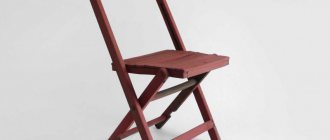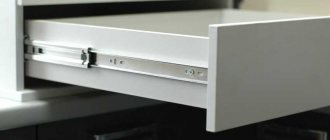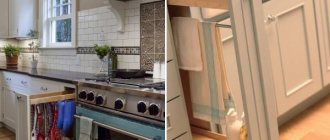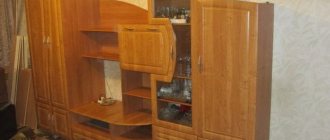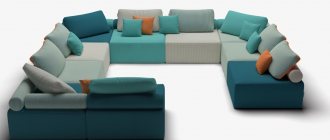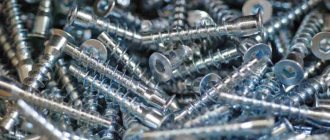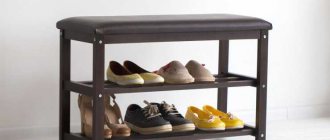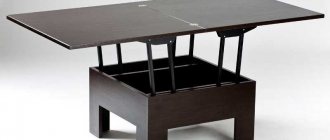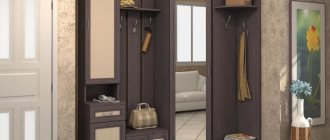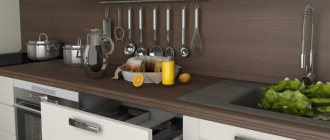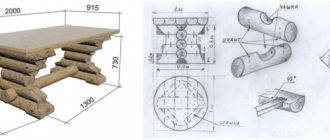Choosing material for the bench
The location of the garden bench in the fresh air requires a number of material requirements for the accessory. Such products must have the following qualities:
- Strength of the structure.
- Resistance to moisture and temperature changes.
- Resistance to fungi and parasites.
- Long service life.
In addition, in terms of aesthetic characteristics, the bench should fit well into the overall interior of the garden.
Today, depending on the material, there are such types of benches as:- Wooden benches.
- Metal products.
- Plastic garden benches.
- Products made of decorative stone.
Some models can be made independently with minimal construction skills, but plastic benches can be purchased at any large furniture store.
Metal
This material attracts with such quality characteristics as durability, practicality, simplicity and resistance to the external environment.
You can make the product entirely from metal, or combine it with wood. The last option is used most often. A design with interesting openwork patterns will highlight the beauty of your garden.
A mandatory attribute of a suburban area is a bench. In addition to fulfilling its functional task, it can decorate the appearance of the garden and area in general.
There are no financial costs required for this; most of the proposed ideas can be implemented independently.
It is important to choose the option that is closest to you and at the same time will not stand out from the overall stylistic picture.
- Neoclassical kitchen with painted facade
Carriage - material for the home
- Construction waste removal
Wooden garden bench
Natural wood is a rich material, natural color and pattern. However, without special treatment, the structure is easily damaged by moisture and pests.
This option will fit well into any interior and will emphasize the richness and style of the garden plot.If the technician is expected to work independently, it is best to stock up on the appropriate reagents - antiseptic solutions and antifungal agents.
Metal benches
Metal benches can be purchased in the store - cast forms, decorative finishes in gold, brass or any other coating. But you can also make a garden bench yourself. The master will need:
- Finished drawing.
- Welding machine.
- Old pipes, fittings or sheet metal.
- Materials for decorative finishing (paints, varnishes, brushes).
There are models with a solid seat and back, molded lattice options and benches without a back. Metal benches require special treatment against corrosion, but in general, they are resistant to moisture and mechanical damage.
Tools and materials
A drawing or drawing of a future creation will help determine the amount of material that will be required for such creativity.
Most often, this material is wood. Its remains can always be found in a barn, attic, or garage. Wood will be an amazing building material; it is soft to process and quite durable, comfortable to the touch and environmentally friendly, suitable for any style of site and lasts a long time.
In the workshop of a real owner you will definitely find nails and screws. And paint or varnish will not require too much money.
Tools you will need are a saw or jigsaw, a plane, a hammer or screwdriver, sandpaper or a sander.
A tape measure and pencil will help you draw the material correctly.
Plastic benches
This type of bench has many advantages in practice:
- A light weight.
- A wide variety of models of different shapes, colors and sizes.
- Low cost of products.
- Resistant to moisture.
- Mechanical strength.
Benches made of decorative stone
At the request of the garden owner, you can use both natural stone and artificial types of material. Finding drawings of finished benches for subsequent work will not be difficult - photos of finished products can be found in any landscape design magazine.
Stone as a material has excellent qualities:
- Strength of the structure.
- Beautiful view.
- Not afraid of moisture and damage.
To create such a bench you will need drawings, construction tools and a minimum of knowledge about stone laying.
Wooden bench without a single nail
In addition to the main parts (back, seat and supports), the design contains fastening elements and fittings. It is advisable to assemble wooden products without nails. Dowels and pins are used as fasteners. It is very important that the quality of the material from which the fasteners are made is high. It is these elements that ensure the reliability of the entire structure. Therefore, you should select wood of durable species.
Japanese style bench assembled using dowels and pins
There is another assembly option without nails. For this, the classic tongue-and-groove connection is used. Using a hand router, protruding elements are formed and nests for them are selected. After dry assembly and adjustment, all parts are sequentially glued together.
A simple bench glued together from solid wooden parts
Types of garden benches
Today the most famous models among garden tools are:
- Bench without back.
- Garden bench with backrest.
- Bench with table.
- Bench with canopy.
- Garden bench with built-in flowerpot.
Each model presented has its own drawings, manufacturing methods and materials used primarily in the work.
Requirements that a garden bench must meet
First of all, the design must be reliable. If the bench is wobbly, it means something was done wrong. In this case, you need to check the drawing and all measurements. If the product has lost its stability during operation, all fasteners and parts should be inspected for wear and damage.
To make a bench, you don’t have to spend money on expensive materials. Often suitable boards and bars can be found in the barn
In addition, the design should be comfortable, which speaks in favor of choosing a wooden bench with a back that provides the ability to lean on. To create more comfortable conditions, you can add a warm blanket and decorative pillows.
Everything is important in a garden bench: comfort, its location and the view from it.
One of the components of convenience is size; the following parameters are considered optimal:
- Depth – 40 cm.
- Height (from ground to seat) – 40.5-45.5 cm.
- Length – 60-300 cm.
- Back height – 90-95 cm.
- The height of the armrests (above the seat level) is 18-23 cm.
- The backrest angle is from 15 to 30°.
- Width – depends on personal preference.
An important requirement is resistance to negative environmental influences. The service life of the product depends on this indicator.
A bench is a place to relax, so it should be comfortable and functional
Also, the design must be combined with the overall exterior of the house and yard. Country style products are simple and their natural color is preserved. Coloring in brown shades close to natural is allowed. To create a design in Provence style, a white wooden bench is suitable. Colors of the cold spectrum (violet, blue, cyan) are also combined with this direction. Bamboo is associated with oriental motifs, which can serve as an excellent building material for a bench.
Wooden bench with supports made from cart wheels in country style
Garden bench in Provence style made of thin planks
Original design of a garden bench in Art Nouveau style
Garden bench with back
This option is comfortable, so it has become more widespread. Materials for independent work are wood and metal profiles.
Only combined options can be made from decorative stone - with a wooden or forged metal back. Plastic models of benches are presented in a large assortment in stores, for example, in Leroy Merlin.
Photos of original benches (ideas for cottages and gardens)
Everyone knows what ordinary benches look like—they’ve seen them more than once. But I don’t want the usual one - the simplest one. Especially if you have already started the process of decorating the site or are just planning it. Why not start from the bench? And then other decorations will follow. You just have to start.
In the garden or near the house I want to have more greenery: beautiful and different flowers. Flowerbeds and flower beds are good, but why not combine them with a bench.
Two flowerbeds of boards and a bench between them
What could be simpler? Two wooden boxes in which flowers are planted and between them a couple of planed and sanded boards. This bench can be placed near the wall, and a couple of long boards can be placed on the wall to create a backrest.
Not everyone likes flower beds made of wood: wood requires maintenance, and without it it quickly loses its appearance. It is especially difficult to care for a tree that is in contact with the soil. Instead of wooden boxes there may be, for example, stone or concrete cabinets.
Garden bench-flower bed
It’s very easy to make such a bench at the dacha with your own hands. You can find ready-made concrete flower beds or do something similar. You can buy a processed board, or you can do it yourself. Instead of a board, there can be half a log - depending on the style of the site. It is easier to secure the seat using a metal corner. It is attached to concrete using dowels, to wood - with self-tapping screws from below or through bolts.
If someone has large plants in durable flowerpots, you can implement the following idea. In this option, the bench covers the plants. To avoid surprises, flowerpots must be very durable...
Flowerpots as legs
There is a similar option for a bench made of boards and without plants: maybe you need to put it on the veranda or in the gazebo. The supports are made of boards of the same size, and the seat is made of timber.
Bench made of boards - a non-standard option
And more variations on the same theme: hollow building blocks are used as support. Treated bars are inserted into the holes. This is the seat of the bench. Just round the edges of the beam, or it will be uncomfortable to sit.
Bench made of hollow blocks and timber
For this garden bench, it is advisable to find large blocks with thick walls. If not, you need to securely fasten the blocks to one another. The whole task is to first secure the blocks (for example, with pins), and then attach the bars to them (with bolts or dowels).
Log benches
If your site is decorated in a rustic or ethno style, the standard approach will not suit you. It is best to use logs in this case - with or without bark - it’s your choice.
The seat for the bench is made of logs - a trunk of large or medium diameter sawn lengthwise. The back is either a smaller diameter trunk, or simply a cut closer to the edge. The legs can also be made from narrow pieces of logs (look at the photo below).
Log bench - quick and easy
The legs and seats are connected to each other with metal pins: a hole of slightly smaller diameter is drilled under the pin in both parts. The pin is driven into one of them, the second part is pushed in and is also driven in, but this time they hit the wood rather than the pin. To avoid leaving traces, lay a piece of unnecessary board and hit it with a hammer (or sledgehammer). Such a connection should be quite reliable, but to be sure, you can install two or three pins, or you can cut a little log, making a flat area of the same size on both parts being connected. By increasing the support area, you will increase the reliability of the seat fastening: after all, the log weighs a lot.
Bench option without backrest
Another interesting option in the “ethno” style is presented in the photo above. It is made in stone, but this bench can also be made from logs. The seat is a very thick board, the legs are a large part of a large diameter deck. A groove is cut in the deck for laying the seat. If you have a tool (you can make a cut with an axe, grinder or chainsaw), it’s easy to do.
Often in the countryside a work desk is needed. From a log you can make not only a bench, but also a table. A version of such an ensemble is shown in the photo. Only the tabletop is made of boards, all other parts are logs of different diameters or from halves.
Table with log benches
A greater degree of processing is inherent in the next bench in the same style. The back, legs, and armrests are made of thick and not very thick branches, the seat is made of sanded and treated (barked and sanded) unedged boards.
Option for a wooden bench for the garden or dacha
The other bench was made almost the same way. Only the boards and branches are located in a different direction and the result is a different look. A DIY bench of this type does not require much skill. In this case, the more careless the work, the more decorative the result.
Wicker back - not often seen
You can make a rest area and a bench around the tree. The designs are simple, making the flooring is generally easy.
Relaxation area under a tree
You can supplement the recreation group with a swing and a gazebo. And above the bench you can put a pergola - this is the “ancestor” of an ordinary arch - one of the types of light gazebo. And for complete relaxation, you can make a pond, fountain or waterfall.
Made of metal and wood
Few people will install completely metal benches in their dacha. They, of course, can be very beautiful, but in the summer they heat up to incredible temperatures, and when it gets a little colder, you can’t sit on them because they are too cold. Benches made of metal and wood do not have these disadvantages. The legs and supporting structure are made of metal, and the seat and back (if any) are made of wood. Moreover, there are also interesting shops in modern design.
Bench made of profile pipe
Rectangles are welded from the profile, jumpers are welded to the side walls, on which the seat boards rest. Simple, stylish, reliable, functional.
In a more advanced form - with armrests, a backrest, soft cushions on the seat, such a design may look like in the photo. The wide seat turns the bench into a sofa, and cushions - fabric-covered furniture foam - add comfort. The tables are made in the same style - a frame made of corrugated pipe and a tabletop made of boards.
One important point: if you make a seat or tabletop from several adjacent elements, they do not need to be butted end to end. There should be a gap of 3-4 mm between adjacent boards/bars. The wood swells and shrinks. In order for the surface to remain relatively flat during these processes, a gap is necessary.
Stylish benches made of metal and wood
If smoother lines are needed - for families with children - you can bend the pipes and make garden benches and a table with rounded edges. This garden furniture is completely safe. An ordinary round or corrugated pipe is bent, leaving the sides in the shape of the letter “P” with a wide back. The length of this backrest is the length of the bench. For the table, the dimensions are made a little larger: the legs and back are longer.
Table and bench made of pipes and boards
Make two identical blanks for the table and bench. Next, cut the boards to equal lengths. For the seat, about 40 cm, for the tabletop, at least 55 cm. They are fastened to the pipes with furniture bolts with a flat head. To prevent the caps from sticking out, drill a hole of a slightly larger diameter under them.
Read about the basics of planning a site here, and how you can decorate it - in this article.
Benches made of boards
The largest group is benches and benches made of boards. There are designs that are more reminiscent of sofas, especially if you put soft pillows on them - and you can lie down.
This garden bench is more like a sofa: if it is of sufficient size, you can lie down
Garden furniture in a modern style is easy to assemble: rectangles with partitions made of thinner boards, connected to each other.
Even the usual design of a country bench can become exclusive if you approach it with imagination: instead of legs and armrests, wooden wheels are used. The result is a designer item.
A bench made of boards with a back and wheels instead of sides - looks interesting
And the simplest possible is a board with legs in the shape of the letter “X”. Such shops were built centuries ago, and you can still see them today.
Traditional bench design
From the boards you can make a bench in a modern style: in the shape of the letter “P”. With this design, the main task is to ensure rigid fixation of the legs and seat: the pushing forces are not compensated for in any way. In this case, it is important to take a thick board or timber so that it does not sag. You can place the board “on edge”: this way the rigidity will be greater. To increase reliability, you can install corners from below.
Simple design, but looks modern
The photo shows an option with a 45° cut. Having a miter box or a circular saw makes it easy to achieve an accurate cut. By accurately joining the workpieces and fastening them, we obtain an angle of 90°. If the seat does not sag, it will last a long time...
An interesting and reliable version of the bench is shown in the photo below. The legs are assembled from boards of different lengths: each second is shorter by the width of the board for the seat. Interesting idea. It is easy to make such a bench: it is important to maintain the dimensions, and everything is connected very simply: with nails into the face of the seat.
Modern style bench
You might be interested in reading how to design and make garden paths.
Original benches
It seems like there’s more that can be thought of... but it turns out there’s a lot. For example, attach the seat to a large stone.
Bench made of stone and boards
Make a structure from bamboo trunks.
Made from bamboo, and whole
Or a stone.
Sitting in winter will be unpleasant, but beautiful...
Read about what kinds of swings there are (for adults and children) and how to build them here. And in this article you can read about the construction of a children's playground; sandboxes are written separately - here.
Bench with table
The manufacturing technology assumes the presence of a solid structure: the bench is connected by supporting mechanisms to the table frame. Most often, when creating such a model, natural wood with additional decorative finishing is used.
By placing a similar structure in your garden plot, you can safely invite guests to a party, since the bench is quite large in size.
Garden bench with canopy
It is a kind of analogue of a miniature gazebo. The presence of a roof determines a number of advantages for practical use:
- Maximum stability.
- Rain protection.
- Ease of maintenance - the presence of a sloping roof does not allow dirt and debris to accumulate at the top.
Having a ready-made diagram allows you to make such a bench yourself.
Bench with built-in flowerpot
An interesting author's idea for the aesthetic design of a garden plot. Instructions for the master on creating such a model:
- Choose a material (most often it is wood or decorative stone).
- Prepare a diagram.
- When carrying out construction work, prepare two niches for flowerpots. The depth of each niche should be sufficient for planting flowers. Bright annuals will look beautiful and original in such a flowerpot.
- It is imperative to provide for a drainage system and a system for the outflow of liquid.
A plant pot is an original idea that fits comfortably into the interior of a garden plot.
Installation location
An inexpensive bench for a summer house will look good under a large tree or next to fluffy bushes, near a pond or in the center of a large flower bed, on a playground or in the entrance area.
Often benches become a place to relax on a veranda or terrace, picnic areas or in a barbecue area.
Garden benches for the dacha are placed in such a way that the most beautiful views can be viewed from it, and not the fence of the neighboring plot. Often it is installed in the shade to take a break from the beds being in the sun.
To make it beautiful, you can decorate it with unusual flowers, climbing vines, creating a nice natural refuge, and lay an interesting path to it.
Requirements for the construction of a garden bench
When making garden benches, a number of requirements must be met:
- Design safety. The bench model must be able to withstand quite a lot of weight.
- Sustainability. When creating a bench, it is necessary to make strong supports that will hold the structure on the ground without the possibility of falling.
- Comfort. The bench should be as comfortable as possible. As you know, all furniture manufacturers focus on the anatomical features of the human body when creating products. When working independently, it is best to do the same.
- Resistant to moisture. High humidity, rain, snow, fog - these are weather conditions that can damage garden furniture without prior special treatment of the products.
- Resistant to temperature changes. The surface of the garden bench should not crack due to rapid changes in degree gradient.
By observing these requirements and providing methods for protecting products from harmful factors, you can create a durable, convenient design with maximum service life.
DIY Tools
To make a bench yourself, you will need not only drawings of benches, but also a certain set of tools. The most common work available to an inexperienced craftsman is wooden benches.
To work you will need to prepare:
- Blanks in the form of wooden boards. The number of blanks depends on the size of the bench and backrest.
- Blanks for support and armrests (if they are provided according to the drawing).
- Materials for strengthening the bench, wood beams are most often used.
- Electric saw, screws or nails.
- Acrylic varnish and paint for decorative finishing.
This list may vary depending on the type of work, style, model, size.
How to make a bench yourself?
The answer depends on what model the owners want to see on their site. There are many options, but it’s best to start getting acquainted with the traditional design, and then look at other, original pieces of furniture. Then it will be easier to make the final choice.
Wooden furniture with backrest
It should be noted right away that this is a standard (for 3 people) with the following dimensions:
- back and seat length - 1500 mm;
- height: benches - 900 mm, seats - 400 mm;
- backrest angle - 20°;
- seat width - 400 mm.
Dimensions are what the master is free to choose. For example, in this drawing of the bench they are slightly different, but the design itself is no different.
Materials and tools
In order for the work to proceed without interruption, you need to prepare everything you need. The must-have list includes:
- The boards are 150x1500 mm, their thickness is 35-40 mm. You need 5 blanks: three will go on the seat, two on the back.
- Boards for the rear legs, which also double as holders for the back: 150x900 mm, the same thickness - 35-40 mm.
- Boards for the front supports of the bench: 150x360 mm. Their thickness is similar.
- Beam for strengthening the legs and for fixing the seat of the structure: 20x40 mm.
- Tools: jigsaw (miter saw), plane, screwdriver.
You will need screws, sandpaper, antiseptic primer and varnish. If maximum protection of the product is necessary, then for wood processing you need to purchase a fire retardant.
How to make a bench with a back?
The first stage of creating a bench is cutting out blanks for the structure. An alternative option is to purchase material that has already been cut to the required dimensions.
- All workpieces are polished, the ends of the boards are processed with a plane. The optimal solution is to give all parts a rounded shape. After preparation is completed, all elements are treated with an antiseptic and fire retardant.
- Take long blanks intended for the rear legs. To set the correct angle of inclination, they are marked. First, 400 mm are measured from the bottom of the elements, here they set the point from which the slope will begin (20°). Both cut boards must match up to a millimeter, otherwise the bench will turn out to be “originally” skewed.
- First of all, use self-tapping screws to assemble the legs. They are connected from above and below by bars, the length of which is 500 mm. The assembled supports are connected with seat boards. They are screwed not to the legs, but to the bars of the structure. Gaps are left between the seat elements: minimum - 10 mm, maximum - 20 mm. They are necessary for air circulation and preventing moisture accumulation.
- To save future furniture from instability and loosening, an additional part is cut out of the timber - a crossbar, which is attached to the lower bars connecting the supports. Its length is 1500 minus the thickness of the boards and legs. If very serious loads on the bench are expected, then there may be two such crossbars.
The last thing to do is the back. The blanks are fixed in accordance with the recommendation: the distance from the edge of the bottom board to the seat is 200 mm, from the edge of the top board - 380 mm. After completing the furniture assembly, the wood is again treated with protective compounds, then covered with several layers of varnish.
The second version of furniture, assembled using almost the same principle, is shown in the photo above. Its main difference is a different method of manufacturing supporting elements.
A masterpiece for the dacha made from pallets
The use of pallets is not a sign of stinginess, but proof of ingenuity, common sense and originality. Therefore, many owners choose affordable pallets for making all kinds of furniture - from sun loungers and tables to “almost flawless” sofas. Creating a bench is the easiest way to use this container. But simplicity does not mean that such furniture will be inferior to its “intelligent colleagues”.
What is needed to assemble the structure?
For “pallet work” you will have to prepare:
- pallets;
- boards (plywood), timber;
- grinding machine;
- furniture metal corners;
- saw, screwdriver and electric drill.
The master cannot do without self-tapping screws. If the owners want to create the most convenient item, they will need rollers, pillows (covers), as well as paint or varnish.
Instructions for creating a design
First of all, the pallet is cut into two unequal parts: a wide seat and a narrow back.
- Both elements are sanded to remove roughness. If speed of work is important, then only those elements that are visible are processed.
- Proceed to the assembly of the structure. First, connect the seat to the backrest. Both halves are combined, then screws are screwed in. The more fasteners, the stronger the bench will be. In order to protect the structure from accidental “unfolding”, both halves are connected on the sides with slats - one or two on each side.
- To make the legs, they take a fairly massive, extremely durable beam. The blanks should not be excessively long, otherwise the furniture will be unstable. First, the supports are attached to the pallets with self-tapping screws, then the structure is reinforced with metal corners, since one type of fastener will not provide maximum reliability.
The assembled structure is coated with several layers of varnish or painted. After the furniture has dried, additional accessories are added - casters, armrests, pillows, etc.
The second option is also not difficult to make, because the four legs are replaced with a more reliable support - a second pallet (plus bars). It is clear that such a massive structure will already be solid, stationary furniture.
Other interesting "creatures"
How to make a bench yourself? If a tree is meant, then there are many answers. Human imagination and pliable material are the reasons why such structures were invented “visibly-invisibly”. Some pieces of furniture are extremely simple to make, others are unusual options, so they often take longer to make.
Benches without backrest made of boards and timber
This design will not require much effort from the author, but it will do its job properly. Boards of the same thickness act as supports and crossbars. You can make them as a seat, or use a more reliable, thick beam.
Benches from old chairs
In this case, the assortment is not limited to one element for the site, since old furniture is a good opportunity to build unusual structures.
Furniture of three chairs
This option involves a minimum of costs and simple work, but the product turns out to be original and completely functional. In this case, armrests were added to the “trio” of ordinary chairs, and grooves were cut into the rounded seat, as their design required this. Additional elements that strengthen this bench are thin and short slats fixed in the upper and lower parts of the backrest.
Interesting design ideas
A creative approach and maximum imagination sometimes bring completely unexpected results. The most interesting models today:
- Ring-shaped bench. The bench is arranged around a tree or stump.
- A bench in the shape of a bundle of bamboo. The seat is located in the center of the bundle.
- Particularly popular are models decorated with figures of animals or fairy-tale characters.
- Folding benches.
It is extremely difficult to make such benches yourself, so you will need the help of a landscape design specialist.
Wooden folding bench
The main advantage of folding furniture is its versatility. Due to the built-in mechanism, it becomes possible to reduce the dimensions of the structure. This makes the process of storing and moving the bench from one place to another much easier. Particularly compact models fit easily into the trunk of a car.
The folding bench can be conveniently stored indoors, where the wood will not get wet
Some modifications can become a full-fledged replacement for an entire set of garden furniture. The transformable bench easily turns into a pair of benches with a tabletop. When folded, the structure does not take up much space, and if necessary, it can become a comfortable dining area.
Transformable bench made of pine boards
Photo of a garden bench
Total
Category: Small architecture
